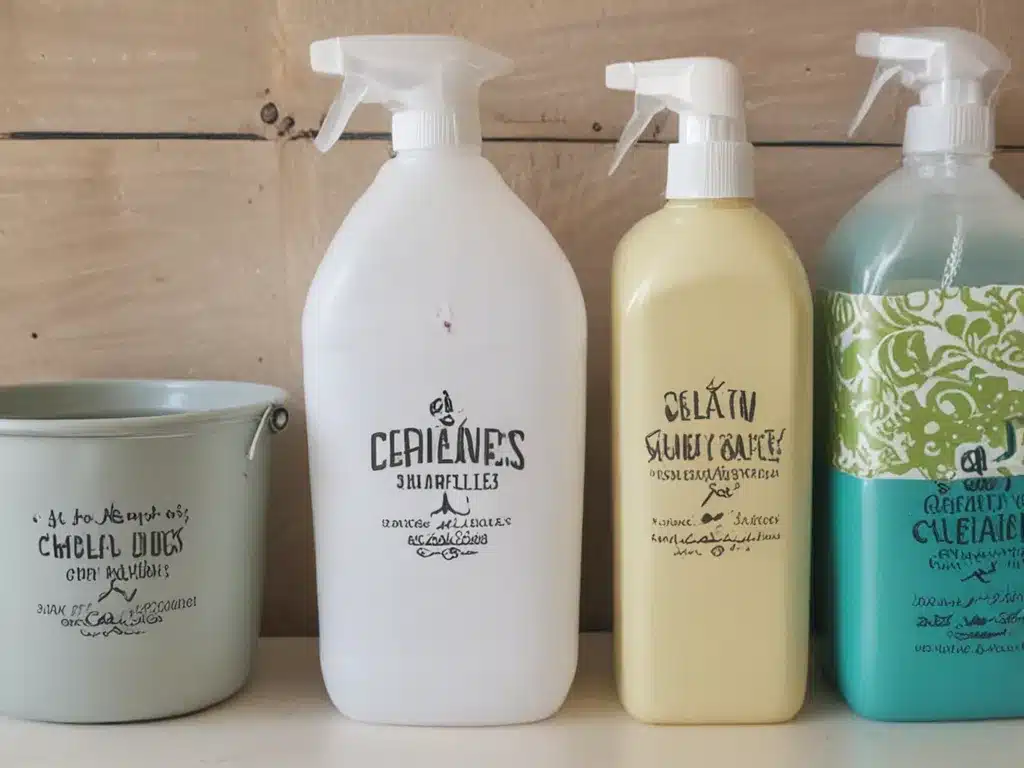Introduction
Reusing old containers to make homemade cleaning products is an easy way to save money and reduce waste. I have found that many everyday items that would normally get tossed can be repurposed into effective, non-toxic cleaners with minimal effort. In this article, I will share my tips and recipes for turning trash into treasure by making DIY cleaning supplies.
Choosing Containers
The first step is collecting empty containers that are suitable for reuse. Here are some of the best options:
Plastic Containers
- Empty detergent bottles – These are ideal for mixing and storing liquid cleaners. Look for ones with pumps or flip caps for easy dispensing.
- Yogurt tubs – The small size works well for products you’ll use in smaller amounts like bathroom cleaner.
- Clear plastic bottles – Saline solution, mouthwash and vinegar bottles allow you to easily see the contents.
Glass Jars
- Jars with lids – Saved food jars, especially smaller ones, are perfect for holding cleaning products. The lid keeps the contents sealed.
- Empty candle jars – The wide mouth gives access for scrubbing out any wax remnants. Jars with metallic lids tend to have an air-tight seal.
Spray Bottles
- Empty cleaner bottles – Don’t toss those Lysol and Method bottles! Rinse thoroughly and reuse.
- Old perfume bottles – The atomizer makes it easy to dispense homemade cleaners and fresheners.
Other Containers
- Coffee cans – Use washed out Folgers or Maxwell House tins to store cleaning supplies and tools.
- Mason jars – Various sizes hold soaps, scrubs and polishes nicely. The mouth is wide enough for a hand or sponge to fit.
Easy DIY Cleaning Recipes
Now that you’ve amassed a collection of empty containers, it’s time to fill them up. Here are some of my favorite homemade cleaner recipes:
All-Purpose Cleaner
This budget-friendly formula works great for most surfaces.
Ingredients:
– 2 cups water
– 1⁄4 cup white vinegar
– 1⁄2 teaspoon liquid dish soap
– 10 drops essential oil (optional for scent)
** Directions:
1. Add all ingredients to a cleaned out 24 oz spray bottle.
2. Shake gently to mix.
3. Spray directly on surface and wipe clean with a microfiber cloth or paper towel.
Foaming Bathroom Cleaner
The foaming action helps this cleaner cling to surfaces.
Ingredients:
– 1⁄2 cup water
– 1⁄2 cup hydrogen peroxide
– 2 teaspoons liquid castile soap
– 5 drops tea tree oil
Directions:
1. Pour all ingredients into a foaming soap dispenser.
2. Replace lid and shake gently to mix.
3. Dispense foam on surfaces, let sit 5 minutes, and rinse clean.
Lavender Scrubbing Cleanser
Loosening dirt and grease is a cinch with this abrasive formula.
Ingredients:
– 1 1⁄2 cups baking soda
– 1⁄4 cup liquid castile soap
– 10-15 drops lavender essential oil
Directions:
1. In a bowl, mix baking soda and soap until a paste forms.
2. Stir in lavender oil.
3. Transfer to a jar for storage.
4. Scoop a dollop onto a sponge or cloth and scrub away grime.
Tips for Effective Use
To get the most out of your homemade cleaners, follow these guidelines:
-
Label each container clearly with the name of the cleaner and instructions for use.
-
Funnel liquids carefully when pouring into narrow-necked bottles to avoid spills.
-
Store cleaners properly – away from heat, sunlight and children/pets.
-
Use cool water when mixing and diluting cleaners for best results.
-
Test formulas first on inconspicuous areas to ensure compatibility and efficacy.
-
Replace liquids every 3-6 months as potency diminishes over time.
The Benefits of DIY Cleaning Products
Concocting my own cleaning solutions has been a game changer. Here are some of the biggest perks I’ve discovered:
-
Saves money – Homemade cleaners cost mere pennies compared to $3-$5 a bottle at the store.
-
Reduces plastic waste – Repurposing empties means fewer containers in landfills.
-
Customizable scents – Add your favorite essential oils for whatever aroma you desire.
-
Safer ingredients – Common pantry items are gentler than harsh chemicals.
-
Effective cleaning power – Thoughtfully combined ingredients cut through grime.
-
Easy to make – Basic recipes take just minutes to mix up.
Final Thoughts
Whipping up DIY cleaners is simple, frugal and eco-friendly. With just a few repurposed containers and common household ingredients, you can tackle dirt and germs without spending a fortune or generating needless waste. I hope these recipes and tips inspire you to look at trash differently and unlock the potential treasures waiting within. Happy cleaning!







